Dry socket (alveolar osteitis) is a painful dental condition that can occur after you have a permanent adult tooth extracted such as the wisdom teeth. If you develop dry socket, the pain usually begins three to four days after your tooth is removed. Normally, a blood clot forms at the site of a tooth extraction forming a protective layer and provides the foundation for the growth of new bone and soft tissue. Dry socket occurs when the blood clot at the site of the tooth extraction has been dislodged or has dissolved before the wound has healed. This results in intense pain, not only in the socket but also along the nerves radiating to the side of your face. Over-the-counter medications alone won’t be enough to treat dry socket pain. Your dentist or oral surgeon can provide treatments to relieve your pain and promote healing.
DRY MOUTH
Dry mouth (Xerostomia) results from an inadequate flow of saliva. It is not a disease, but a symptom of a medical disorder or a side effect of certain medications, such as antihistamines, decongestants, pain killers, diuretics and many others. Saliva is the mouth’s primary defense against tooth decay and maintains the health of the soft and hard tissues in the mouth.Saliva washes away food and other debris, neutralizes acids produced by bacteri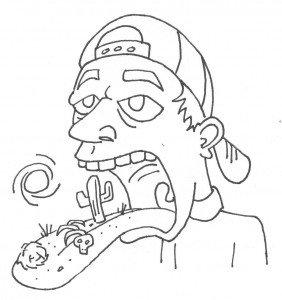 a in the mouth and provides disease-fighting substances throughout the mouth, offering first-line protection against microbial invasion that might lead to disease. Some of the common problems associated with dry mouth include a constant sore throat, burning sensation, trouble speaking and difficulty swallowing. Without saliva, extensive tooth decay can also occur. Your dentist can recommend various methods to restore moisture and give you relief.
a in the mouth and provides disease-fighting substances throughout the mouth, offering first-line protection against microbial invasion that might lead to disease. Some of the common problems associated with dry mouth include a constant sore throat, burning sensation, trouble speaking and difficulty swallowing. Without saliva, extensive tooth decay can also occur. Your dentist can recommend various methods to restore moisture and give you relief.
Teething
Although newborns usually have no visible teeth, most start developing baby teeth between 4-7 months of age. Children usually have their full set of 20 primary teeth in place by age 3. As their teeth erupt, some babies may become fussy, sleepless and irritable, lose their appetite or drool more than usual. But diarrhoea, rashes and a fever are not normal for a teething baby. Your child may have sore or tender gums when teeth begin to erupt. Gently rubbing their gums with a clean finger, a small cool spoon,or a moist gauze pad can be soothing. Your doctor may recommend a pacifier. When your child’s teeth begin to come in, brush them gently with a child’s size toothbrush and water. For children between the ages of 2 and 6, brush their teeth with a pea-sized amount of fluoride toothpaste. Be sure they spit out the toothpaste. You should start regular dental check-ups for your child after their first tooth appears, but no later than their first birthday.
clean finger, a small cool spoon,or a moist gauze pad can be soothing. Your doctor may recommend a pacifier. When your child’s teeth begin to come in, brush them gently with a child’s size toothbrush and water. For children between the ages of 2 and 6, brush their teeth with a pea-sized amount of fluoride toothpaste. Be sure they spit out the toothpaste. You should start regular dental check-ups for your child after their first tooth appears, but no later than their first birthday.
Oral Piercings
Body piercing is a popular form of self-expression. Oral piercings or tongue splitting may look cool, but they can be dangerous to your health. That’s because your mouth contains millions of bacteria, and infection and swelling often occur with mouth piercings. For instance, your mouth and tongue could swell so much that it could close off your airway or you could possibly choke if part of the jewelry breaks off in your mouth.In some cases, yo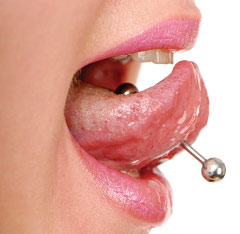 u could crack a tooth if you bite down too hard on the piercing, and repeated clicking of the jewelry against teeth can also cause damage. Oral piercing could also lead to more serious infections, like hepatitis or endocarditis. Thus the best option is to consider removing mouth jewelry before it causes a problem. Don’t pierce on a whim. The piercing will be an added responsibility to your life, requiring constant attention and upkeep. Talk to your dentist for more information.
u could crack a tooth if you bite down too hard on the piercing, and repeated clicking of the jewelry against teeth can also cause damage. Oral piercing could also lead to more serious infections, like hepatitis or endocarditis. Thus the best option is to consider removing mouth jewelry before it causes a problem. Don’t pierce on a whim. The piercing will be an added responsibility to your life, requiring constant attention and upkeep. Talk to your dentist for more information.
Diet and Dental Health
Your body is a complex machine. The foods you choose and how often you eat them can affect your general health and the health of your teeth and gums, too. If you consume too many sugar-filled sodas, sweetened fruit drinks or non-nutritious snacks, you could be at risk for tooth decay. It’s not only what you eat but when you eat that can affect your dental health. . Eat a balanced diet and limit between-meal snacks. If you do snack, choose something that is healthy like fruit or vegetables or a piece of cheese. Foods that are eaten as part of a meal cause less harm to teeth than eating lots of snacks throughout the day. Also remember to brush twice a day, floss daily and visit your dentist regularly.
. Eat a balanced diet and limit between-meal snacks. If you do snack, choose something that is healthy like fruit or vegetables or a piece of cheese. Foods that are eaten as part of a meal cause less harm to teeth than eating lots of snacks throughout the day. Also remember to brush twice a day, floss daily and visit your dentist regularly.
Dental Check-Up at Chandigarh Judicial Academy
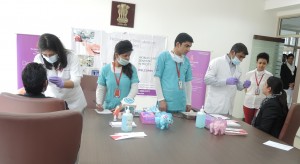 A dental check-up camp was held today at the Chandigarh Judicial Academy, Sector 43 Chandigarh. Under the supervision of Director Gobinder Singh Matharu, Mrs Navjot Kaur and Mrs Neerja Kulwant Kalson, Dr. Vijita Mehta and five other members of the team assessed the oral hygiene status of approximately sixty judges-in-training as well as a few staff. During the check-up, they were made aware of the existing dental issues
A dental check-up camp was held today at the Chandigarh Judicial Academy, Sector 43 Chandigarh. Under the supervision of Director Gobinder Singh Matharu, Mrs Navjot Kaur and Mrs Neerja Kulwant Kalson, Dr. Vijita Mehta and five other members of the team assessed the oral hygiene status of approximately sixty judges-in-training as well as a few staff. During the check-up, they were made aware of the existing dental issues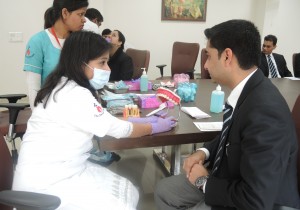 .The camp was followed by a power-point presentation that was used to raise awareness about the causes of dental as well as gum problems. Along with these, their signs and symptoms and various methods on how they can be prevented were also discussed.
.The camp was followed by a power-point presentation that was used to raise awareness about the causes of dental as well as gum problems. Along with these, their signs and symptoms and various methods on how they can be prevented were also discussed. 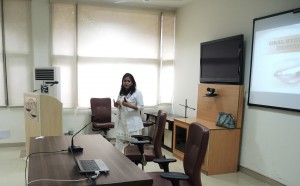 These included proper brushing instructions as well as the importance of a visit to the dentist on a regular basis so as to prevent or intercept future dental/ gum problems. At the end of the presentation, the floor was open to all for any dental related queries that they might have and were then answered by Dr. Vijita Mehta.
These included proper brushing instructions as well as the importance of a visit to the dentist on a regular basis so as to prevent or intercept future dental/ gum problems. At the end of the presentation, the floor was open to all for any dental related queries that they might have and were then answered by Dr. Vijita Mehta.
Discoloured teeth
Unsightly tooth stains can cause great embarrassment and keep people from smiling. Usually, as age progresses, the teeth tend to become yellow, which is normal. However, certain factors can cause changes as well. 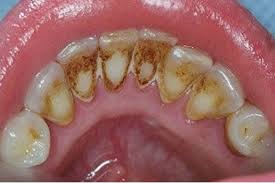 There are two types of tooth stains: extrinsic stains or surface stains and intrinsic stains when the interior sections of the tooth have darkened. Coffee, tea, soda, red
There are two types of tooth stains: extrinsic stains or surface stains and intrinsic stains when the interior sections of the tooth have darkened. Coffee, tea, soda, red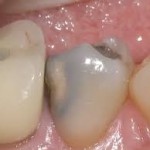 wine, curries, turmeric or even soy sauce can cause extrinsic tooth stains when consumed over a long period of time.Bad oral hygiene and smoking too can greatly discolour teeth. Intrinsic stains can be caused by certain drugs, some mouthwashes, dental fluorosis, large silver fillings or trauma too can cause discoloration which is the result of a dead nerve. Depending upon the cause of the discoloration, your dentist may advise a treatment which can vary from changing oral habits,
wine, curries, turmeric or even soy sauce can cause extrinsic tooth stains when consumed over a long period of time.Bad oral hygiene and smoking too can greatly discolour teeth. Intrinsic stains can be caused by certain drugs, some mouthwashes, dental fluorosis, large silver fillings or trauma too can cause discoloration which is the result of a dead nerve. Depending upon the cause of the discoloration, your dentist may advise a treatment which can vary from changing oral habits, 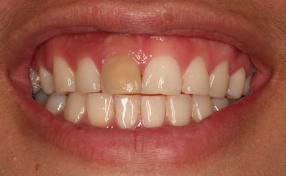 ultrasonic cleaning, teeth whitening, tooth coloured fillings or porcelain veneers.
ultrasonic cleaning, teeth whitening, tooth coloured fillings or porcelain veneers.
Supernumerary Teeth
Supernumerary teeth or Hyperdontia is the condition of having teeth that appear in addition to the regular number of teeth. They can appear in any area of the dental arch and can affect any dental organ. Depending upon the position of the tooth, supernumerary teeth can be classified as: Mesiodens (most common), Paramolars or Distomolars (rare). Supernumerary teeth d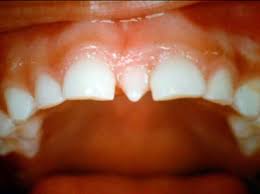 o not cause any harm, but they may delay eruption of nearby teeth or cause other dental or orthodontic problems. Dental X-rays are often used to diagnose hyperdontia. Extraction of such teeth is a mode of treatment if they are unslighty to the patient. If not, they can be retained in the mouth but oral hygiene must be meticulously maintained.
o not cause any harm, but they may delay eruption of nearby teeth or cause other dental or orthodontic problems. Dental X-rays are often used to diagnose hyperdontia. Extraction of such teeth is a mode of treatment if they are unslighty to the patient. If not, they can be retained in the mouth but oral hygiene must be meticulously maintained.
Minimally Invasive Dentistry
The goal of minimally invasive dentistry, or microdentistry as it is sometimes called, is to conserve healthy tooth structure. It focuses on prevention, remineralisation and minimal dentist intervention. Minimally invasive dentistry allows dentists to perform the least amount of dentistry needed while never removing more of the tooth structure than is required, to restore teeth to their normal condition. In addition, dentists use long-lasting dental materials that conserve the maximum tooth structure so that the need for future repairs is reduced. First the dentist determines your risk of tooth decay after which he can strategize on how to prevent or reduce this risk. The techniques involved can include remineralisation using fluoride, air abrasion using a stream of air combined with a super-fine abrasive powder, sealants which seal the deep grooves, inlays or onlays which require less tooth removal than crowns, or bite splint for people who grind their teeth.
Peg-shaped Laterals
Peg lateral teeth, or peg lateral incisors, are terms used to describe a condition where the lateral incisors (the second tooth on either side of the front teeth) are undersized, conical and appear smaller than normal. This situation occurs when the permanent lateral incisors do not fully develop. Since peg lateral incisors are undersized, many times there will be a space between them and the adjacent teeth (this space normally would have been occupied by a fully developed lateral incisor).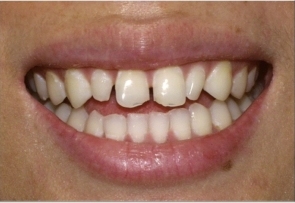 This resultant space the smile to appear abnormal. There are several ways to treat and correct this condition. Porcelain veneers are the most common treatment for peg lateral incisors, and require little or no tooth preparation. A porcelain shell is simply bonded over the smaller peg laterals making the teeth appear normal in size. If not enough space exists, it can be created by orthodontic treatment.
This resultant space the smile to appear abnormal. There are several ways to treat and correct this condition. Porcelain veneers are the most common treatment for peg lateral incisors, and require little or no tooth preparation. A porcelain shell is simply bonded over the smaller peg laterals making the teeth appear normal in size. If not enough space exists, it can be created by orthodontic treatment.



